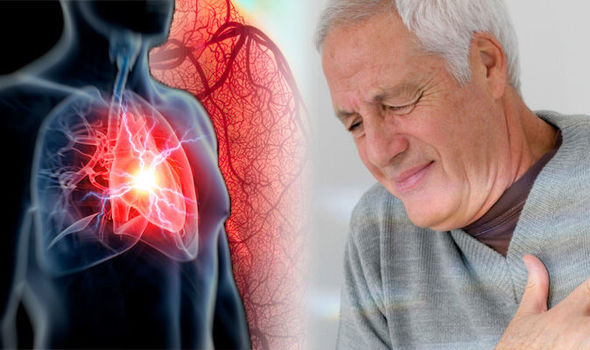
This is the first of a three-part series on heart disease in honor of American Heart month.
Heart disease refers to multiple disease conditions involving the heart. Medical professionals more often use the term cardiovascular disease to refer to a diagnosis of the heart and vascular system.
Most people think of heart disease as clogged arteries of the heart. The medical term for this condition is coronary artery disease (CAD), and it is the most prevalent of heart disease conditions. More than 18 million adults in the United States have CAD.
A myocardial infarction, more commonly known as heart attack, occurs when an artery to the heart muscle is severely or completely obstructed and heart muscle injury occurs. Approximately 800,000 heart attacks occur annually in the U.S.
For more than half of people who have a heart attack, the first sign or symptom is the event itself. When symptoms do present, patients may experience chest pain or pressure, neck or throat discomfort, symptoms radiating to the left (more common), right, or both arms, and new or progressive shortness of breath.
If any of these symptoms occur during physical exertion, and are relieved by rest, I recommend seeking prompt medical attention. Time is critical when it comes to a heart attack and delaying evaluation or ignoring symptoms is a lost opportunity to prevent permanent heart damage.
Other heart disease conditions include:
- Congestive heart failure
- Heart valve abnormalities
- Heart rhythm disturbances (atrial fibrillation is a common arrhythmia present in 15 to 20 percent of people 55 years or older)
- Hypertension (also known as high blood pressure)
The Good News and Bad News
With regards to heart disease there is both good news and bad news to consider.
The Bad News First
Despite increased awareness and efforts, heart disease continues to be the number one cause of death in the United States.
- Heart disease accounts for 650,000 deaths per year, far exceeding cancer as the most frequent cause of death. The statistics are even more concerning when stroke and heart disease deaths are combined.
- 47% of Americans have at least 1 of these 3 cardiac risk factors – hypertension, high cholesterol, and tobacco use. It is estimated that CAD and heart attacks result in a 16-year decrease of life expectancy. Congestive heart failure decreases life expectancy by 10 years.
The Good News
People are living longer and better lives as a result of better treatment options for heart disease, and increased efforts in prevention. In January 2020, the Centers for Disease Control and Prevention (CDC) reported the first increase in life expectancy for women and men in the United States since 2014.
We have seen progressive improvements in the treatment of heart attacks, resulting in improved survival, and quality of life. Statistics show that hypertension and high cholesterol are under better control than previously, with a resultant reduction in risk of cardiac events.
There is an increased interest in the younger population to prevent heart disease through healthier living. There is also evidence that treatments available to middle age and elderly individuals with established heart disease are improving, and prevention measures are still effective, even after heart disease has been diagnosed.
However, in recent years, diabetes and obesity (two significant CAD risk factors) have risen severely in prevalence. Therefore, there is an even greater need for increased efforts in prevention of heart disease.
How can I assess my heart health?
In my practice I use specific tests and measurements to evaluate heart health. The most valuable assessments include:
- Measure blood pressure and maintain in an ideal range (120/80 or lower)
- Measure blood cholesterol, specifically focusing on the balance between good cholesterol (HDL 50 or higher) and bad cholesterol (LDL 90 or lower)
- Measure blood sugar and A1C
- Measure weight and keep the Body Mass Index (BMI) in the normal range (18-25)
- Heart calcium scan – for some patients, a heart calcium scan can be used as a way to identify early plaque build-up in the heart arteries. It is a limited CT scan of the heart with minimal radiation exposure. This scan can identify plaque in the heart 10 to 15 years before there is blockage.
While heart disease remains a major health concern in the United States, prevention measures and treatment have improved significantly. People are living longer, healthier lives, with a better quality of life. A heart-healthy lifestyle can increase life expectancy by 12 to 14 years, with better quality of life and improved functional status.
The time is right to make the necessary changes to feel better now and to be around longer living a full life with your family, friends and loved ones.
click here for reference